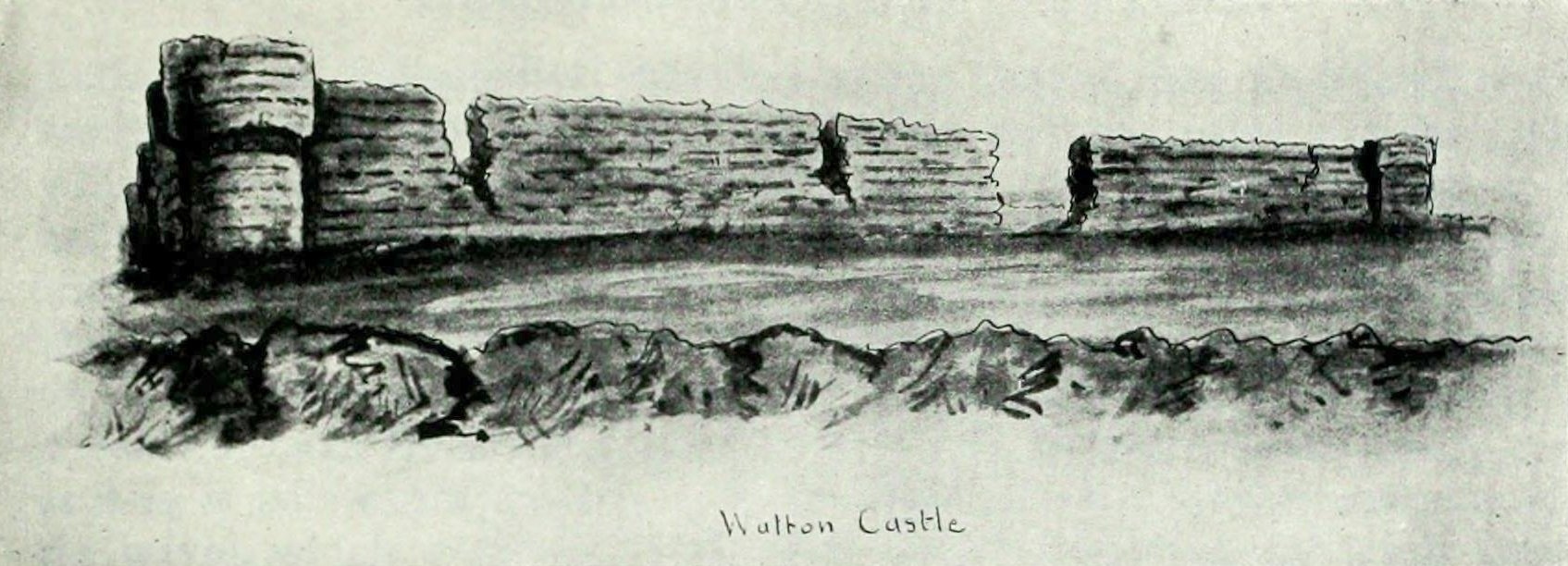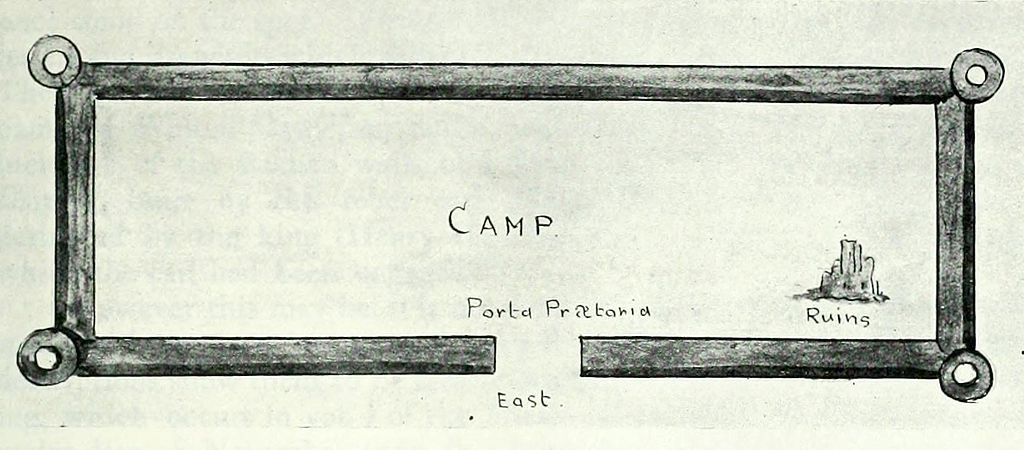Walton Castle

The above sketch shows Walton Roman fort as it appeared in
1623. It looks similar to the fort remains still found at Burgh
Castle only 15 miles to the north. As such it was probably built
in the late third century with other Saxon sea forts. According
to the sketches Walton consisted of a rectangular playing card
structure with round turrets at the corners.
Possibly Walton was known as Dommoc
and from 632 had been the seat of a diocese. At Domesday Walton
belonged to Roger Bigod (d.1107) and the hall and vill here was the
only place in Colneis (the name of the surrounding district between the
rivers Orwell and Deben) that did not lie under the jurisdiction of St
Etheldreda, otherwise known as Ely abbey. Possibly the hall was
the predecessor or actual tower of Walton castle.
Before the Anarchy, it was possibly one of the Bigods who built a tall
castle keep in the south-east corner of the fort. The ruins of
this were still visible in the seventeenth century. This castle
was garrisoned by Henry II in 1157 when he seized all the Bigod and Blois castles in East Anglia. When the king gave Bungay and Framlingham castles back to Bigod in 1163 he kept control of Walton. Two years later the king started building Orford castle,
presumably as a replacement for Walton which he may have intended to
return to Earl Hugh after Orford was finished, with the latter castle
then becoming a check on the earl's power in the district.
However, before Orford was finished, Earl Hugh took matters into his
own hands and during the war of 1173 he and the earl of Leicester
attacked the royally garrisoned castle, but failed to reduce it.
Within the fortress were four knights, Gilbert Sanford, Roger Sturmy,
William Talemarsh and William Visdelou, who received 5 marks (£3
6s 8d) pay from the king that September. The 20 serjeants who
were with them received a single mark (13s 4d) between them.
After putting down the rebellion, King Henry demolished Walton castle
in 1176 when Robert Willauesham and Alnoth the engineer oversaw the
throwing down of Walton castle for the grand sum of £31 8s
3d. Such a large expenditure would suggest that the keep was of
some size and much effort was needed in its destruction. The same
year the costs of garrisoning the castle, presumably up to the time of
its demolishment, was calculated. The accountants found that the
sheriff had spent £21 13s 3d on this project under the view of
Richard Branford and Edmund Brechehert. This had included
carrying munitions to and from the fortress. The carrying of
munitions from the castle would also suggest that the site was
abandoned this year, as the accounts for its destruction would
indicate. The castle was not mentioned again, so it is to be
presumed that the royal destruction was as severe as the costs would
indicate. The vill of Walton remained with the Bigods and was
worth £65 by 1225.
The 1623 sketch plan suggests that Hugh's castle consisted of another tall rectangular keep like Bungay. At Walton the keep seems to have used the fort as its bailey. In this respect it probably copied Rochester and possibly even the Tower of London.
It is also noticeable from the sketch that the tower only survived to
first floor level, with possibly some fragments of a second
storey. Within a century of the sketch being made coastal erosion
had finished the slighting work of Alnoth the engineer.

Copyright©2020
Paul Martin Remfry


